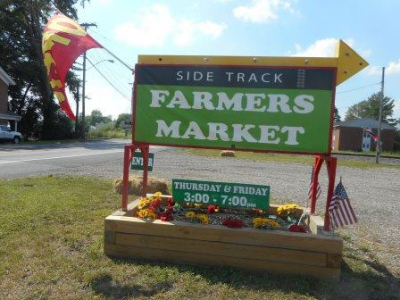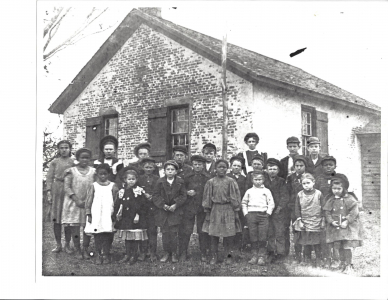Crops on the Sotherden FarmsPosted on June 3, 2019 |
REMEMBERING CLAY
Crops on the Sotherden Farm
As I look around at the flooded fields in the northern part of Clay, I wonder when and how will the farmers plant. Although I see some other fields with plastic covering the early crops. Is it good to plant early or wait to be sure? Lets see what Carl Sotherden says about his crops.
Carl begins: “We raised hay, potatoes, tobacco and had a small apple orchard as our cash crops. Our first cow stable that I remember had eight wooden stanchions but soon we .began to expand. Moving our grainery, we were able to add five more stanchions to this milking line. A few years later, we built on a 20 foot bent which allowed us another row of stanchions, a maternity pen and a driveway between the gutters. By this time, we had a milking machine and were able to produce more milk with the same amount of workers. Then as time went on, we rebuilt our machine shed into pens for young stock which we either put into a milk line or sold for cash.
“I well remember having to break-out the suckers and blossoms from tobacco plants and searching for the large tobacco worms so they wouldn’t destroy the leaves. The main use of tobacco in those days was for cigars and for chewing. The large perfect leaves, which they used for the cigar wrappers, brought the highest price so it was quite necessary that they be well protected. Tobacco growing required a well-drained soil either of gravel or light sandy loam to make the crop thrive. Our farm is gravelly loam so is well suited for tobacco cultivation. There was quite a bit of hand labor involved from the time of: planting the seeds under cheesecloth as early in the spring as possible; transplanting the plants in rows about three feet apart, the plants about 20 inches apart in the row; hand hoeing and cultivating with horses; worming and suckering; cutting by hand with tobacco shears; stringing on tobacco lath; drawing on a special rack; hanging in tobacco sheds which must have narrow adjustable doors for proper drying; and the last step for the farmer – stripping the leaves from the stalks and sorting out the leaves that were suitable for wrappers, thus demanding the premium price. The humidity in the stripping room was controlled by keeping an iron kettle on the pot bellied stove fired either by wood or coal. If the air was too dry, the leaves would crumble and have to be sold as a cheaper grade. The tobacco buyer kept track of the stalks hanging and was in and out at the time of stripping to get the best price. Shortly after the end of World War I, most of the tobacco growing ceased in our vicinity and the farmers turned to growing other cash crops.
“The J. Weller Co. of Ohio had been a processor and packer of pickles and cucumbers for quite some time but gradually turned to making sauerkraut and a large near-by storehouse was rigged over into a kraut plant. This later plant was owned and run by Ward Moulton of Phoenix. In just a few short years, the principal industry of Clay was the cutting, processing and packaging of sauerkraut. Thus, the raising of cabbage as a cash crop spread out from the local farmers to take in Clay, Baldwinsville and Lysander and the surrounding area. Most of the farmers contracted for their cabbage, but a few brave souls raised cabbage to sell on the open market when there was a bad year and a shortage of cabbage to fill the tanks at the factories. Sometimes a few aces of early cabbage was processed and canned and the vats were filled a second time. We were cabbage growers and also hauled trimmings and spread them on the land as fertilizer for about 40 years.
“In 1916 when our country entered World War I, it was necessary to enlarge our armed forces in a hurry and the young able bodied men 18 and up were asked to join up. Uncle Ed Lepinske, my mother’s brother, (father of Bud Lepinske, former Historian) was in this age category and was drafted. He was farming with his father at the time and had raised a pair of oxen…He had trained them to do most of the jobs other farmers used horses for. He even had one of the oxen trained to draw a single cultivator to work in between the rows as the crops were growing. This was quite an accomplishment when you realize that the ox was guided only by vocal commands where the hose is guided by reins. It was a sad day when Uncle Ed left for the service and Buck and Bright, the ox team, had to be left by their trainer and driver. This was the last team of oxen that I remember…
“This meant that it was much easier for the younger boys to get a job to fill the servicemen’s places at home.”
Dorothy Heller, Historian
Other
Remember Clay Stories
Hiram Sharp - Part IV
Remembering Clay | Aug 22, 2014
Hiram Sharp – Part IV - Political Prisoner in Van Diemen’s Land*

Side Track Farmer's Market
Remembering Clay | Aug 26, 2016
REMEMBERING CLAY
Side Track Farmer's Market

